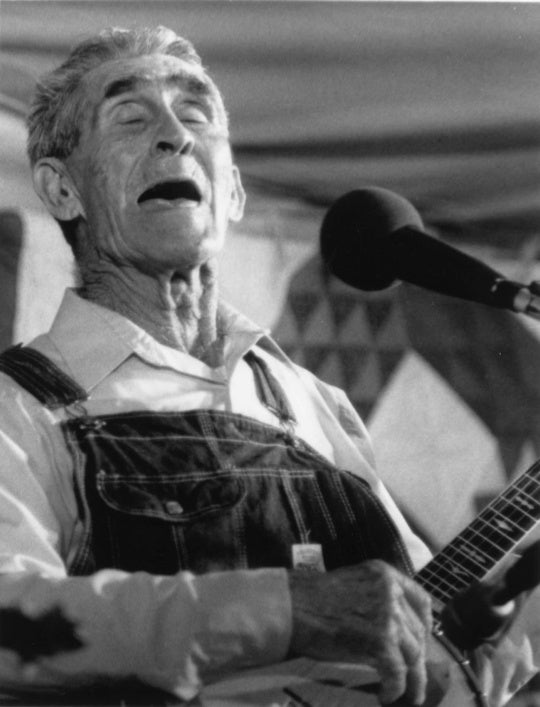
Falling somewhere between works in progress and unresolved experiments, Bryan Graf’s new exhibition Landlines feels productively unfinished. In many of the works, Graf attempts to capture the digital and virtual overtaking the analog and natural—placing the viewer in the confused liminal space where many Gen X-ers like myself and Graf find ourselves. What is natural in 2019? How does human impact on the earth become visible? How do we navigate the massive infiltration of technology?
The show opens with the diptych Mirrored Path (Quikly Panning) and Mirrored Path (Slowly Panning), images that would be close to identical if not for the ghostly streaks interrupting the otherwise pristine landscape, apparently created by moving the camera horizontally while creating the exposure. It’s hard to not land in the literal with these images as the title of the exhibition: Landlines, intended as a reference to now-rare landline telephones. The focus of this diptych—and throughout this exhibition—is the subtle brilliance of the stillness and knowledge that comes with static contemplation, which has largely been exchanged for boundless and unfixed portability. The whole exhibition seems to mourn stillness as Graf performs acts of analog fixation.
In Jungle Code (self portrait), he presents an image of what appears to be an iPhone security screen with one third of the code entered, capturing the anxious moment of entering the lapse between realities. Throughout the exhibition, Graf presents C-prints made using a color darkroom with light sensitive paper and chemical processes, rather than creating images using the more standard current mode of ink-jet printing. Paying attention to the subtle details of process is essential here, as is an awareness of the history of photography.

Random Walks serves as a centerpiece of the exhibition focus. The installation of colored translucent C-prints obscures the exterior landscape that includes a dumpster and tree. Alchemizing the photographic process, the images alter our observational powers. Instead of looking at a photograph, we are looking through a photographic filter, ourselves immersed in the seductively kaleidoscopic light. It’s a nice trick, effectively merging the representation and the real.
Pursuing a similar goal of dissecting the materiality of a photograph, Christina Price Washington also delves into the histories of the medium in deliberately abstracted ways. In her solo exhibition White Balance at Swan Coach House Gallery, she investigates histories of photographic representation by interrogating materials and methods used to achieve prescribed light value. A critical reapparaisal of value is at stake here, questioning the authority of those who made the subjective decisions that have impacted all photographs we see. Using a variety of expired and rare photographic papers, Washington explores the materiality of tonal ranges by incorporating a variety of printing and tonal adjustment techniques.

Washington parses this history by mining archives of expired photographic papers, all of which contain their own ghosts—imperfections created through aging. This becomes most apparent in Photo Paper Test Panels a collection of eight images using fourteen different types of mostly exposed photographic paper. Like much of the work in this exhibition, this small collection is simultaneously incredibly simple and extremely dense. There are many fascinating slight anomalies, the phantom traces left by time.
In White Balance, Washington offers a reinterpretation of the visual rules largely defined by men such as Ansel Adams and William Henry Fox Talbot. By recreating and re-examining these processes, Washington opens up space for the emergence of a new sort of photographic subjectivity, however vaguely defined it may be at present.

Experiencing both of these bodies of work reminded me of Timothy Morton’s brilliant and unruly book Hyperobjects, in which he defines the titular term as “things that are massively distributed in time and space relative to humans.” He continues, “Hyperobjects occupy a high-dimensional phase space that results in their being invisible for stretches of time.” Both Graf and Washignton’s exhibitions focus on capturing hyperobjects of sorts and offer proposals for shattering traditional ideas of how photographs can represent space and time.
In Washington’s work, photographic representation becomes an accumulation of subjective processes, material interventions, and latent embedded history. The complexity of the translation of an image from apparatus to viewable surface is immense, and the thingness of the photograph is what’s deconstructed in Washington’s work, revealing the implications of universalized subjective processes.
In Graf’s work, the indexical elements of images seem to become more slippery, harder to define as they bob and weave through a myriad of photographic processes spanning over a century. This confusion and separation, and dissolving of the analog we all are experiencing, brings us to perhaps the largest “hyper-object” of all: global warming. Such easy words to say, but so complicated to understand. Perhaps it would be better understood if we could slow down and separate the multiple realities we exist in today– maybe lingering a little longer without earbuds and bluetooth headsets to see further into the reality we are often walking by instead of through.
Bryan Graf’s solo exhibition Landlines is on view at Atlanta Contemporary through December 22.
Christina Price Washington’s solo exhibition White Balance is on view at Swan Coach House Gallery through November 7. She will give an artist talk at the gallery on Saturday, November 2 at 3 pm.




